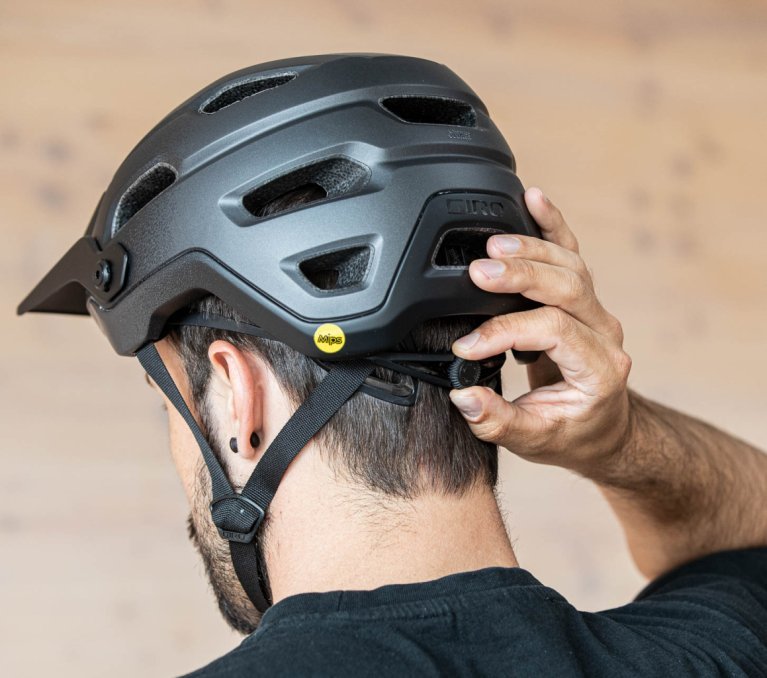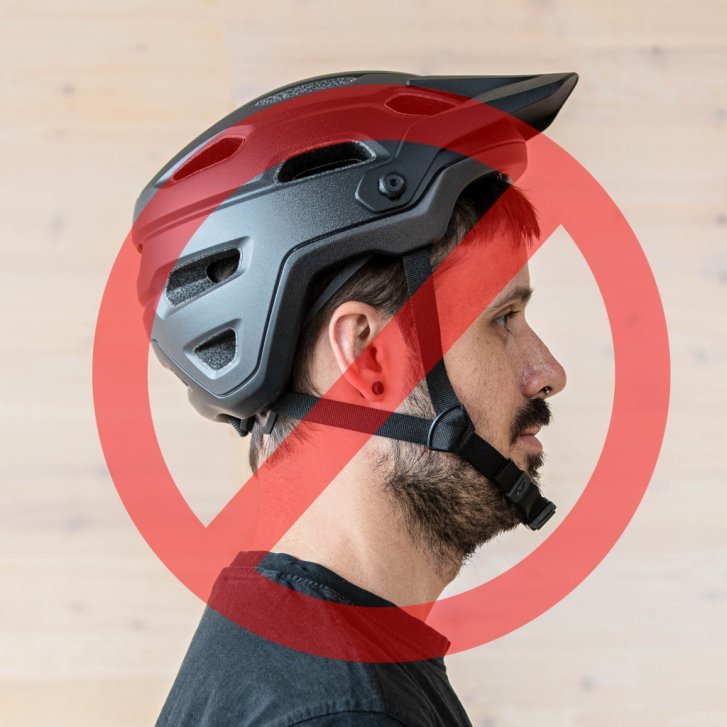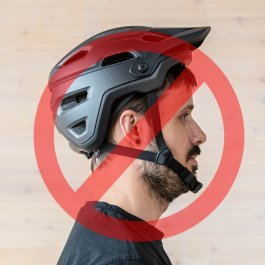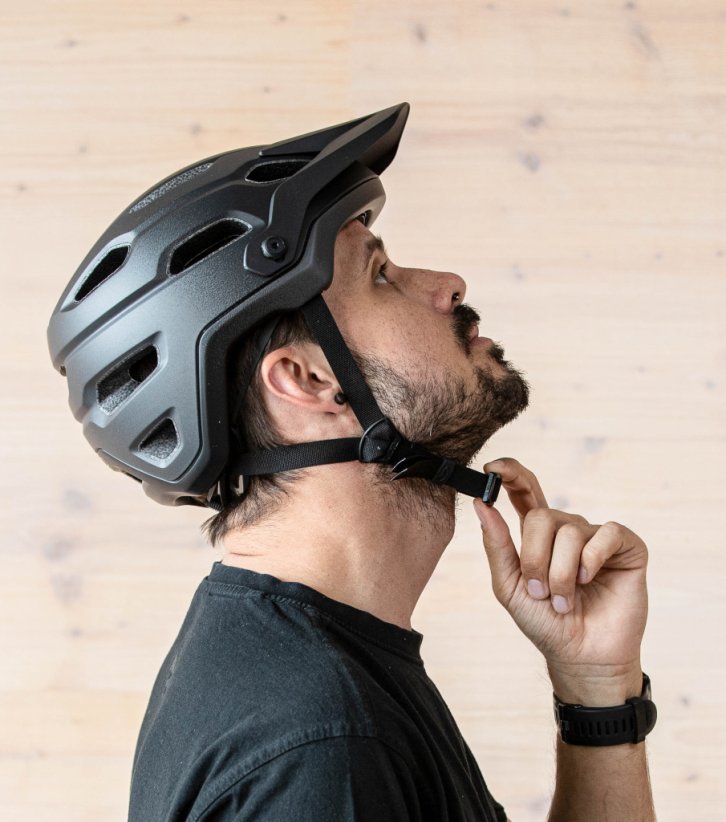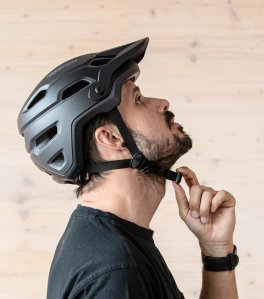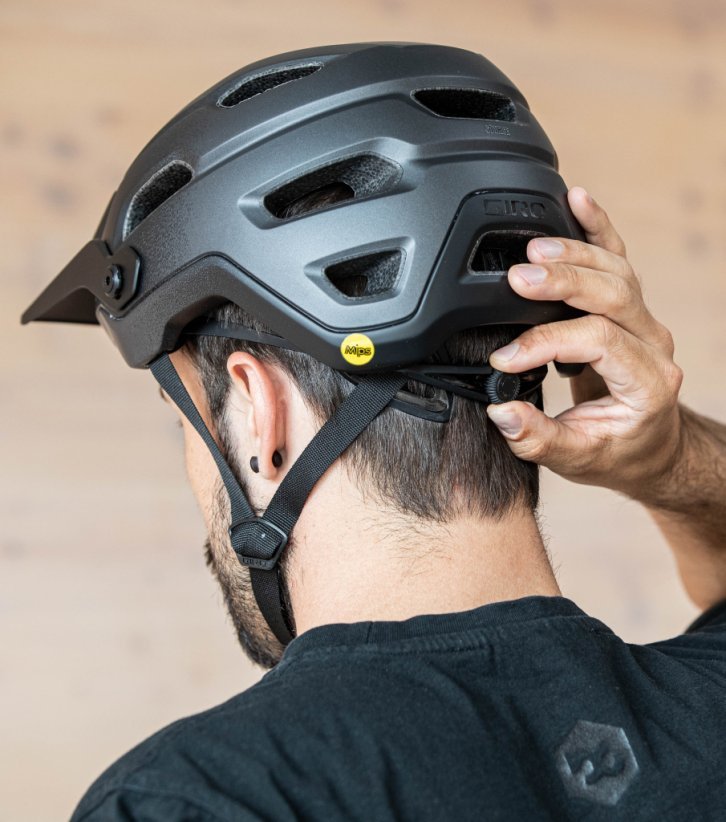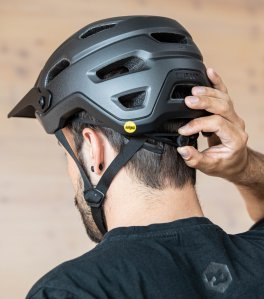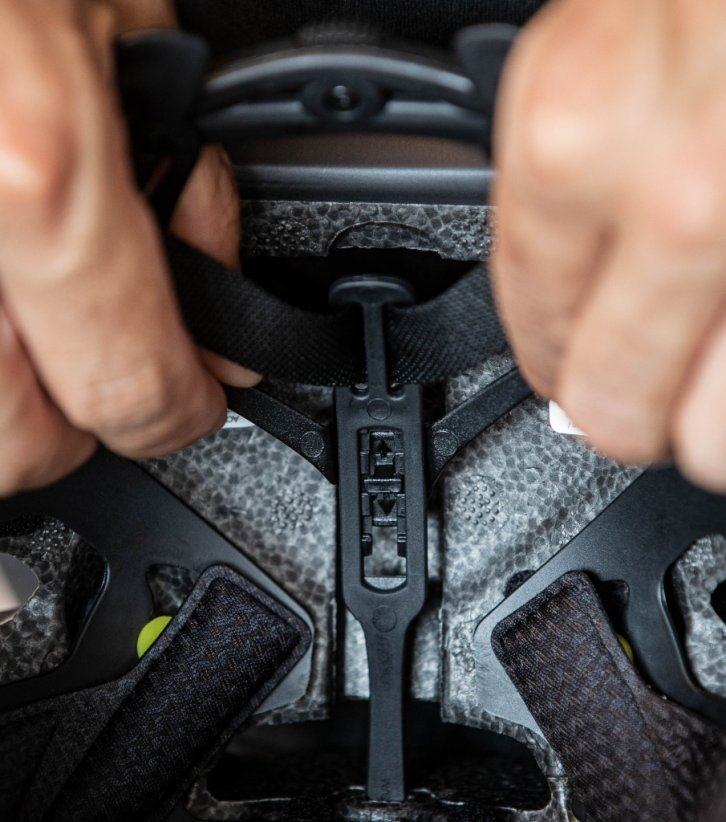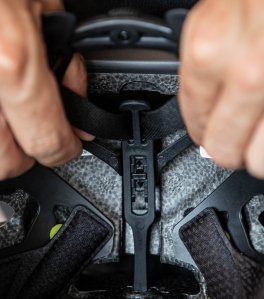How to fit your bicycle helmet correctly
A helmet protects the head, but only if it is correctly fitted. How to adjust your helmet properly is explained here in a few simple steps.
This is not how it should be! The bike helmet is positioned too far back on the neck. © bc GmbH
Often, you see people on their bikes wearing helmets that sit so oddly on their heads, that the protective effect in case of a fall would likely be null.
In this blog post, we will show you how to find the right bike helmet for you and how to optimally adjust it to your head. Because only a correctly adjusted helmet will stay properly on the head during a fall and can thus protect you reliably from injuries.
Before you buy
Before you buy a new bicycle helmet, you should think about the right size. Helmet sizes are based on head circumference. Although actually, all new bike helmets have an adjustment for head circumference, there are different helmet sizes. The distribution of sizes can vary depending on the manufacturer. For example, a helmet in size M from Alpina is intended for a head circumference of 55 to 57 cm, while a helmet from MET in size M should fit 56–59 cm.
So, before buying a helmet, measure your head circumference! To do this, take a tape measure and place it about 2 cm above your eyebrows and lead it around your head. The tape measure should slope slightly backwards. If the tape measure is positioned correctly, you can pull it tight and read your head circumference.
Also, it is worth noting that manufacturers use different models of heads. Therefore, it's not guaranteed that every sufficiently large helmet will fit every wearer equally well. The best way is to find "your" manufacturer by careful trying on, so there are no uncomfortable pressure points that spoil the fun of cycling.
The perfect fit – Adjusting the Straps
Once you have decided on a model in your size and hold it in your hands, you still have to configure it to your own head by adjusting the straps. Follow these guidelines carefully:
- The chin strap should be as tight as possible, without restricting your breathing.
- The strap triangle should be right below your ear.
- The straps forming the triangle should all be equally tight without any play.
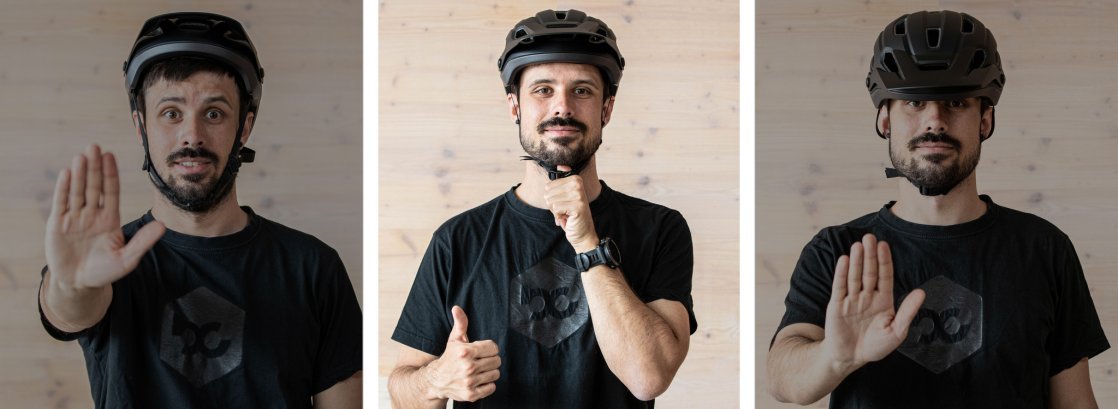
Your bike helmet should not rest on your eyebrows and should not sit too far back on your neck. The middle image shows the correct position. © bc GmbH
The bike helmet is properly worn, and the chin strap is adjusted. © bc GmbH
To properly adjust the helmet to your head, you first need to adjust the straps. You should pay attention to the following points:
• The chin strap should be as tight as possible, but it shouldn't hinder you from breathing or opening your mouth
• The strap triangle should sit directly under the earlobe
• The straps that form the triangle should also lie firmly against the head, offering the helmet little room to move
When adjusting the straps, you should proceed very carefully.
Width adjustment is now standard for bike helmets. Tighten it until you feel the helmet fits snugly. © bc GmbH
Height adjustment – a practical feature, especially for people with a ponytail. © bc GmbH
Adjusting the bike helmet to your head circumference
With a dial or a small ratchet at the back of the head, you can adjust the helmet to the head circumference. Put the helmet on and operate the circumference adjustment until you feel the helmet becoming tight. Afterwards, you should not be able to lift the helmet off your head without feeling a significant resistance. There are also some helmet models where the adjustment system can be varied in height, which can be practical depending on the shape of the head or, for example, for women with ponytails.
To take off the helmet, you first have to loosen the adjustment.
What to do if the helmet still wobbles?
If the helmet still wobbles on the head despite careful adjustment, it can only be because
• the helmet is too big
• the helmet pads are too thin. Most helmets come with helmet pads in 2 thicknesses or they can be purchased later as spare parts
Have a good and safe ride
Once you've adjusted your helmet, you can finally hit the trail or the road. But remember, even with a helmet don't push beyond your limit!

